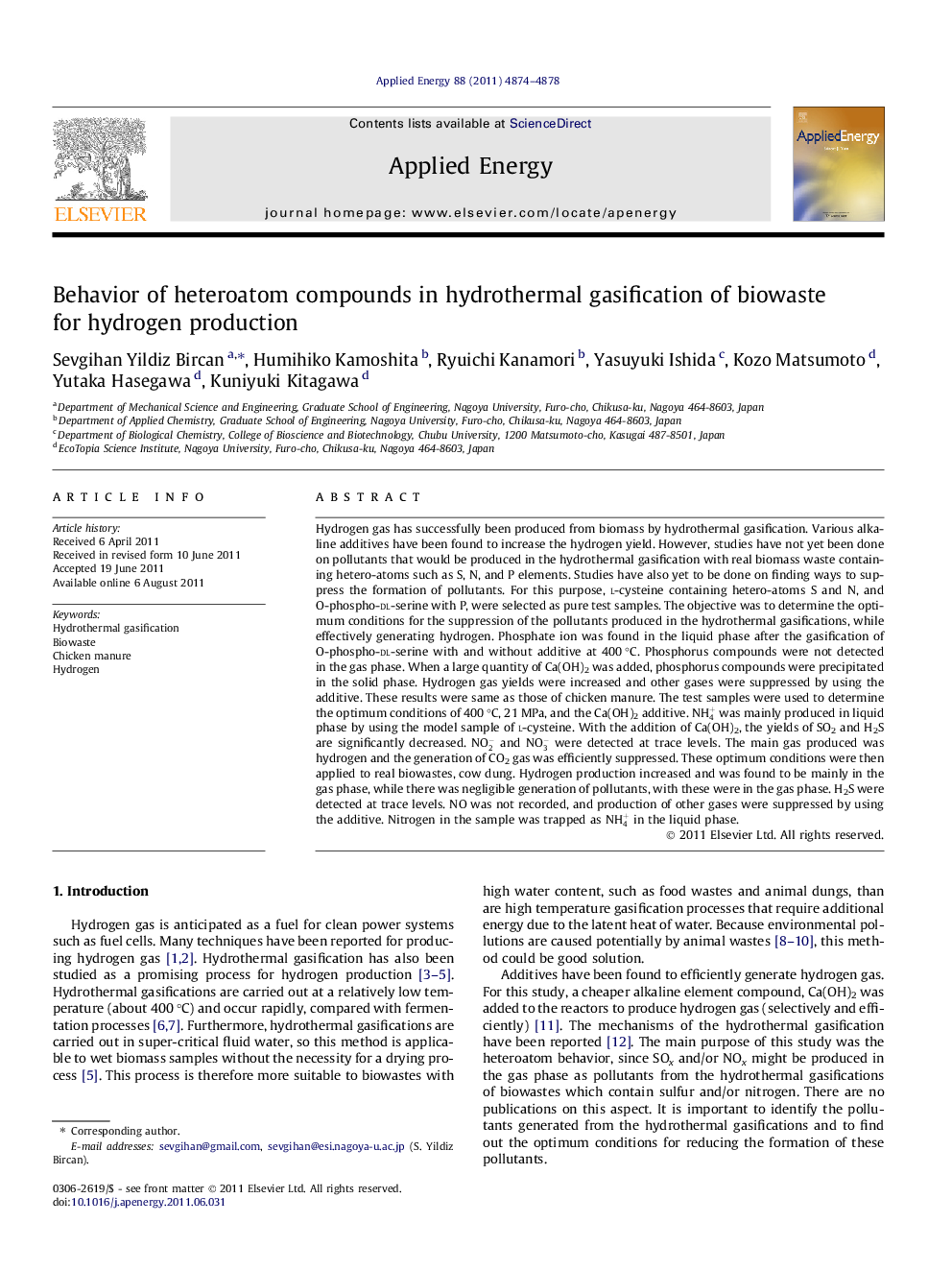| Article ID | Journal | Published Year | Pages | File Type |
|---|---|---|---|---|
| 244011 | Applied Energy | 2011 | 5 Pages |
Hydrogen gas has successfully been produced from biomass by hydrothermal gasification. Various alkaline additives have been found to increase the hydrogen yield. However, studies have not yet been done on pollutants that would be produced in the hydrothermal gasification with real biomass waste containing hetero-atoms such as S, N, and P elements. Studies have also yet to be done on finding ways to suppress the formation of pollutants. For this purpose, l-cysteine containing hetero-atoms S and N, and O-phospho-dl-serine with P, were selected as pure test samples. The objective was to determine the optimum conditions for the suppression of the pollutants produced in the hydrothermal gasifications, while effectively generating hydrogen. Phosphate ion was found in the liquid phase after the gasification of O-phospho-dl-serine with and without additive at 400 °C. Phosphorus compounds were not detected in the gas phase. When a large quantity of Ca(OH)2 was added, phosphorus compounds were precipitated in the solid phase. Hydrogen gas yields were increased and other gases were suppressed by using the additive. These results were same as those of chicken manure. The test samples were used to determine the optimum conditions of 400 °C, 21 MPa, and the Ca(OH)2 additive. NH4+ was mainly produced in liquid phase by using the model sample of l-cysteine. With the addition of Ca(OH)2, the yields of SO2 and H2S are significantly decreased. NO2- and NO3- were detected at trace levels. The main gas produced was hydrogen and the generation of CO2 gas was efficiently suppressed. These optimum conditions were then applied to real biowastes, cow dung. Hydrogen production increased and was found to be mainly in the gas phase, while there was negligible generation of pollutants, with these were in the gas phase. H2S were detected at trace levels. NO was not recorded, and production of other gases were suppressed by using the additive. Nitrogen in the sample was trapped as NH4+ in the liquid phase.
► In hydrothermal gasification, cow dung and chicken manure used as real biowastes. ► l-cysteine and O-phospho-dl-serine used as test samples of them. ► Hydrogen was produced as the main gas, other gas was efficiently suppressed. ► The P elements of liquid phase were converted to solid compounds. ► The best condition was obtained with the use of 3 mmol Ca(OH)2, under 400 °C, 22 MPa.
